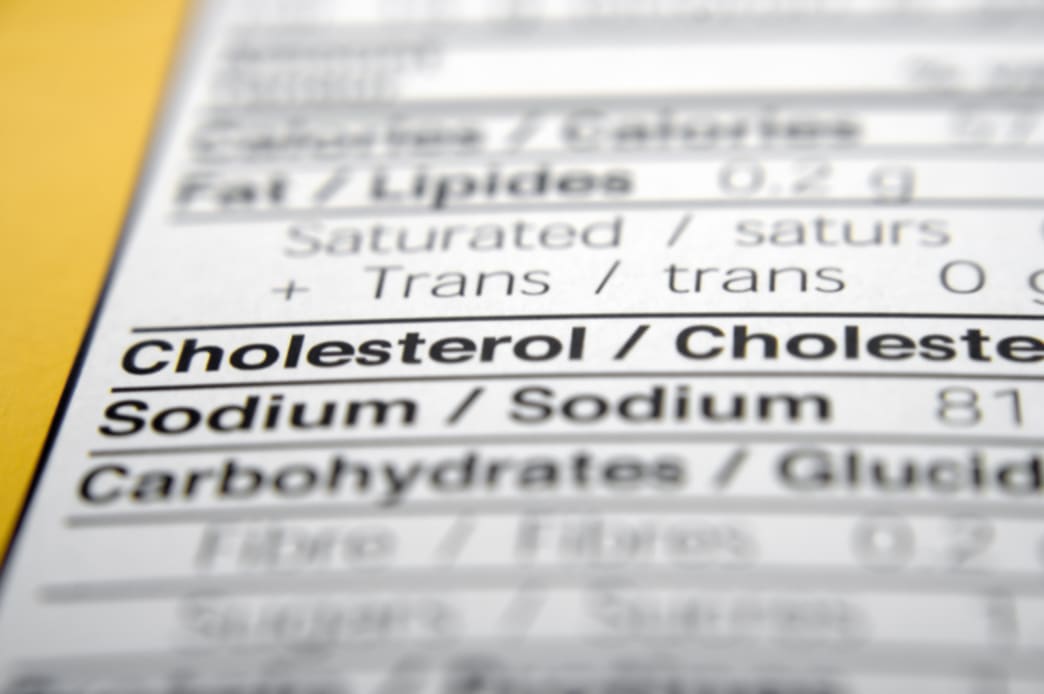

· By The Oxygen Team
Controlling Cholesterol: Navigating the Highs and Lows for a Heart-Healthy Journey
Reading Time: 4.5 min
With all the numbers you remember each day — your ATM pin, your email password and your sets and reps in the gym — you might feel like your brain doesn’t have room for any more digits. But there’s one set of numbers that counts above all for active individuals: your cholesterol levels.
People “need to be concerned about heart disease, and the most lethal form of heart disease results from cholesterol buildup, which leads to plaque in the arteries,” says Prediman K. Shah, MD, director of the Division of Cardiology at Cedars-Sinai Medical Center in Los Angeles, California. “The best way to avoid this from happening is to intervene at a young age with lifestyle choices that include a healthy diet and exercise.”
Importance of Lowering Your Cholesterol
You may already know that it’s important to lower your low-density lipoprotein (LDL), or “bad” cholesterol, as too much of it circulating in your blood can cause plaque to build up in your arteries, limiting the blood flow to your heart and brain.
But new studies reveal that it’s also essential to boost your levels of high-density lipoprotein (HDL), or “good” cholesterol, which acts like Drano for your bloodstream, moving through your blood vessels without sticking to your artery walls, and helping to shuttle LDL particles out of your arteries. Studies show that even a five-point drop in HDL cholesterol is linked to a staggering 25-percent increase in heart disease risk.
Total cholesterol should be less than 200 mg/dL
What’s more, researchers are also discovering that the actual size of the particles that make up your LDL cholesterol also matters: smaller, denser particles are more likely to accumulate in your arteries, while larger, “fluffier” ones pass through the bloodstream more easily.
The good news is that your cholesterol levels, and even the size of your particles, can be controlled with the right lifestyle choices. By maintaining a healthy weight, hitting the gym regularly and eating a clean diet, you can make sure that everything adds up to healthy cholesterol numbers.
How to Control Your Cholesterol
Stay Lean & Fit
“Staying lean and fit reduces high LDL cholesterol levels, cuts the risk of type 2 diabetes, and limits the risk of high blood pressure,” says Shah. “All of these are ultimately beneficial for cardiovascular health.”
Shedding pounds through diet and exercise can reduce LDL cholesterol by up to 22 percent, found a review by researchers at Oregon Health and Sciences University. And it’s crucial to drop belly fat; a new analysis by the Mayo Clinic found that among those who already have heart disease, even modest muffin tops produce negative effects on cholesterol levels, and previous studies have shown that belly fat is associated with not only higher levels of LDL cholesterol, but also the more harmful, smaller particles.
To drop belly fat and keep your whole body trim, keep added sugars in your diet down to 100 calories or less per day. That’s just one of the dietary suggestions from the American Heart Association, which has released new evidence that living a healthy lifestyle helps to control all the risk factors for heart disease.
Cholesterol Myths: True or False?
Not sure if eggs are a safe bet? Heard that a low-carb diet can improve your digits? We dug through the latest cholesterol research to bring you the real deal on some of the most current cholesterol myths (and facts!).
Eating eggs will lead to unhealthy levels of cholesterol.
False: “Eggs are perfectly OK,” says Daniel Rader, MD, director of the Preventive Cardiovascular Medicine and Lipid Clinic at the University of Pennsylvania School of Medicine. The USDA found that a large egg today has 14 percent less cholesterol than it did in 2002. In 2015, the USDA let eggs off the hook, claiming that eggs have been wrongfully blamed for heart disease. However, they did add that “individuals should eat as little dietary cholesterol as possible” because foods that are higher in dietary cholesterol are also higher in saturated fats.
Skinny women don’t get high cholesterol.
False: A person with any body type can have high cholesterol. According to the American Heart Association, overweight people are more likely to have high cholesterol, but thin people should also have their cholesterol checked regularly. People who do not gain weight easily are often less aware of how much saturated and trans fat they eat. Nobody can “eat anything they want” and stay heart-healthy.
Some cholesterol medications can give active women muscle soreness and pain. True: FDA studies have found muscle pain and weakness associated with “statin” drugs (common cholesterol medication) in some users. Always ask your doctor which type of medication will work best for you.
If you can’t reach your toes while your legs are straight, you might have high cholesterol.
True: Abnormal cholesterol levels can stiffen arteries and lead to plaque buildup, which can make it hard to perform this movement. On the other hand, you may just not be flexible enough, so getting tested at the doctor’s is the best way to know if your levels are healthy.
Eating a low-carb diet can help you control your cholesterol.
False: “It may help you lose weight in the short term,” says Rader, “but there is no evidence that low-carb diets are heart healthy. In fact, they often increase LDL cholesterol levels because they are high in fat, and may even increase a person’s risk of developing heart disease,” he says.
Get To The Gym
Consistent exercise can boost your good (HDL) cholesterol levels by five to eight mg/dL, says Patrick McBride, MD, MPH, associate director of the University of Wisconsin Hospital and Clinics’ Preventive Cardiology program.
Start with daily aerobic exercise. “You can get a short-term boost in HDL every time you do cardio,” says Manhattan-based exercise physiologist and nutritionist Martica Heaner, PhD. Resistance training is also critical.
A study found a 12-percent decrease in the ratio of total cholesterol to HDL cholesterol and a five-percent drop in LDL cholesterol among subjects who lifted weights. The changes in total cholesterol equate to a five-percent decrease in the risk of heart disease, says study author George Kelley, DA, FACSM, of West Virginia University.
On your weights days, consider grouping your exercises into an effective circuit. “The best activity for improving cholesterol that incorporates strength training is circuit training — three sets of circuits that target a variety of muscle groups,” says McBride.
Finally, studies have also shown the potential of yoga to improve cholesterol levels by reducing stress. Try all three!
Written by The Oxygen Team for Oxygen Magazine and legally licensed through the Matcha publisher network. Please direct all licensing questions to legal@getmatcha.com.
